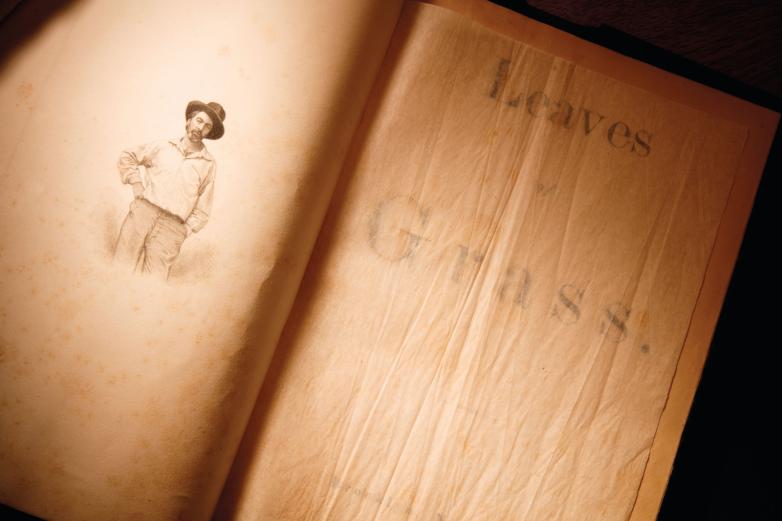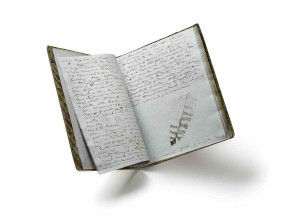Camera-Ready Victorians
The complete works of William Henry Fox Talbot, the British ‘father of photography,’ now online
When Walt Whitman’s Leaves of Grass appeared in 1855, it changed the course of American literature. Energetic, subversive, and bursting with life, it was both laden with praise and bashed by the critics, stoking speculation about the author’s sexuality and arguments about his unconventional poetic style. Whitman famously tinkered with his masterpiece for the rest of his life.
Few people realize, however, that the book was the source of furious fixing by its author—not just before publication, but at the printing press. Now, scholars realize that as the 795 copies of the first edition were being printed, Whitman and the printers made substantial changes to the text. As a result, it is possible that each of the 184 known surviving copies is unique.
How unique? That’s a question Kenneth Price, Hillegass Professor of English at the University of Nebraska-Lincoln and co-director of the university’s Center for Digital Research in the Humanities, intends to answer. Price and his colleagues were recently awarded a $300,000 grant from the National Endowment for the Humanities to create a digital variorum—a collection of different images of the book’s text—of at least twenty copies of Leaves of Grass for The Walt Whitman Archive, an online repository of Whitman texts and resources.
“I think it will be illuminating for readers and scholars,” said Price. Not only will the variorum highlight differences between different copies of the first edition, it will contain contextual links that make it easy to compare how one line migrated from the manuscript to an often entirely different place within the printed poem. “He seems to have thought of the line as his unit of composition,” said Price, who referred to Whitman’s habit of moving lines from place to place as “a sort of proto word processing.”
Whitman’s characteristic verve is evident in everything from pronouns that disappear and reappear to entirely different lines that reflect revisions made while the type was set by hand. (A controversial period that is missing from the last line of the poem “Song of Myself” seems to have been a casualty of that process—though it sparked decades of argument about its textual import, it appears to have simply fallen out of the type form and never made it onto the page.)
Right now, Price and his team are attempting to collate a group of firsts that have known variations in the hope that a detailed comparison will reveal more discrepancies. “We want to press on that and detect more,” he said. The team suspects that even more changes exist than are already known, so additional revisions could justify an expansion of the project. But as with all things Whitman, the project has the potential to become a kind of poetic rabbit hole. “You begin to wonder whether you’re insane,” Price joked. “It’s meant to be an experiment and a test.” Rather than take what Price called “an extreme urban assault type approach,” the project is designed to set the stage for a potential expansion in the future.
By the time Whitman died in 1892, Leaves of Grass had ballooned from a twelve-poem production to one that contained 389. The final result was a monument to Whitman’s lifelong obsession and creative output. And the slender volume that started it all, suggested Price, still has secrets to reveal. “The 1855 Leaves of Grass is not a stable thing,” he said. “It’s a vibrating, shimmering thing.”
Like many good things in life, the publication of Leaves of Grass appears to have been a process, not an event—a process that will become even clearer in the coming years.

















